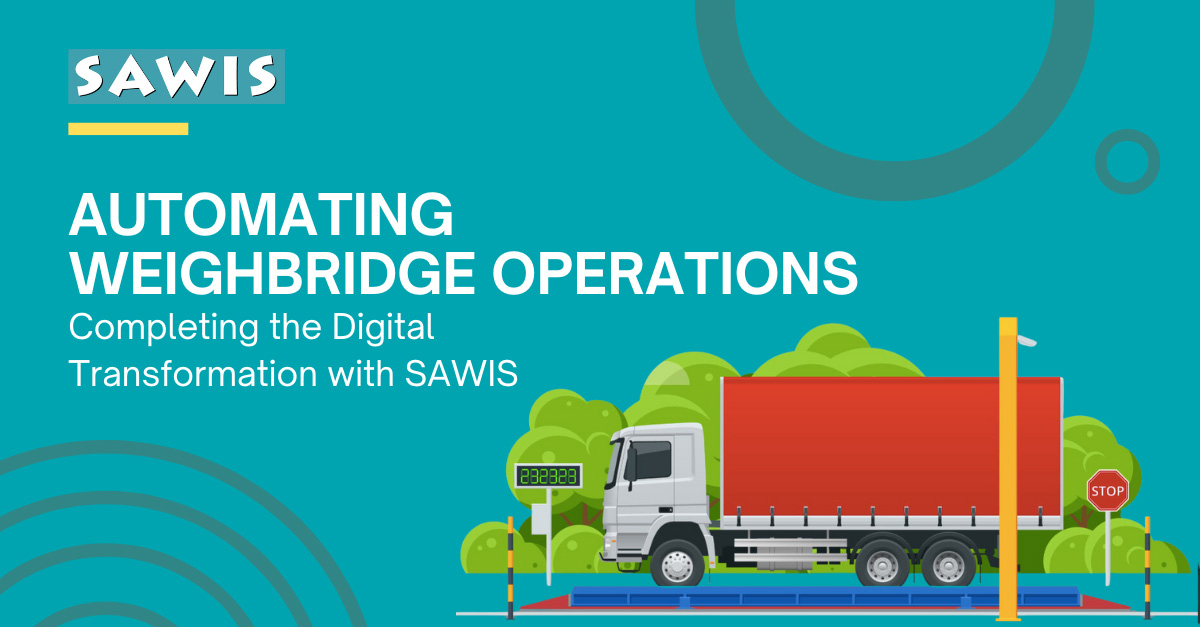
Automating Weighbridge Operations: Completing the Digital Transformation with SAWIS
In the era of rapid digital transformation, businesses across various industries are embracing automation to enhance efficiency, accuracy, and productivity. However, one critical aspect that often remains overlooked is the automation of weighbridge operations. Many enterprises still rely on manual or semi-digital systems for weighbridge management while implementing advanced digital solutions downstream. This oversight can lead to increased operational costs, heavy dependence on human integrity, and potential inaccuracies. Smart weighment automation systems like SAWIS (Smart Automated Weighment Information System) offer a comprehensive solution to bridge this gap, ensuring a seamless and fully digital workflow from start to finish.
The weighbridge is a pivotal component in industries where weight measurements are directly linked to vendor payouts and inventory management. Manual weighbridge operations are not only time-consuming but also prone to human errors, leading to discrepancies that necessitate frequent internal audits. This constant need for verification inflates operational costs and puts undue pressure on employees. Automating weighbridge operations with SAWIS eliminates these inefficiencies by ensuring precise and reliable weight measurements, thereby reducing the need for audits, and minimizing human intervention.
One of the standout benefits of implementing SAWIS is the significant improvement in cycle times at the weighbridge. By organizing the weighment process and synchronizing it with other digital systems, SAWIS streamlines operations, reducing the time required for each weighment. This optimization not only enhances throughput but also minimizes bottlenecks, enabling faster processing of vehicles and materials. In industries with high volumes of weighments, this time-saving aspect translates into substantial cost savings and improved overall productivity.
Moreover, SAWIS enhances data accuracy and integrity through automated data capture and real-time integration with enterprise resource planning (ERP) systems. This seamless integration ensures that all weight data is accurately recorded and instantly available for analysis and reporting. The elimination of manual data entry reduces the risk of errors and discrepancies, providing businesses with reliable and consistent data for decision-making. Additionally, the ability to track and analyse weighment data in real time allows for better inventory management and operational efficiency.
Finally, automating the weighbridge with SAWIS aligns with the broader goals of digital transformation by creating a cohesive and interconnected operational environment. This end-to-end digital integration fosters better coordination across various departments, from procurement and logistics to finance and auditing. By ensuring that weighbridge operations are fully automated, businesses can achieve a truly holistic digital transformation, driving efficiency, reducing costs, and maintaining a competitive edge in their respective industries.
In conclusion, the importance of automating weighbridge operations with a smart system like SAWIS cannot be overstated. By addressing the challenges associated with manual weighbridge processes, SAWIS not only enhances accuracy and reduces costs but also significantly improves operational efficiency and cycle times. For industries where weight measurements are critical to vendor payouts and inventory management, SAWIS provides a reliable and comprehensive solution that completes the digital transformation journey. Adopting such automation is not just a technological upgrade but a strategic move towards achieving operational excellence in the digital age.
